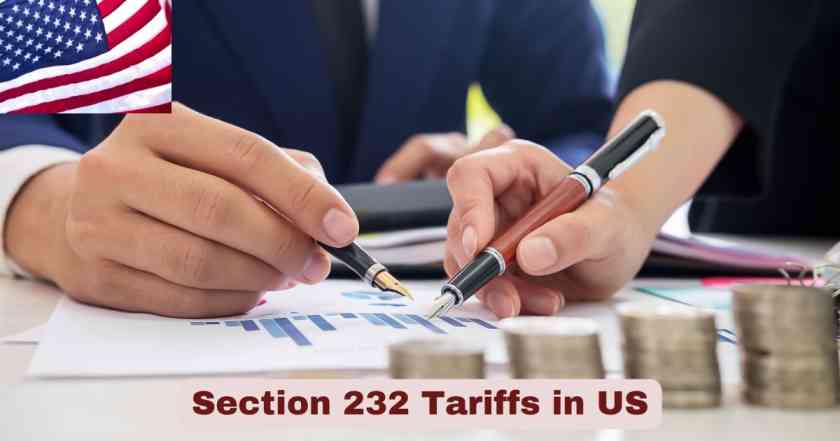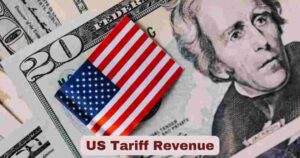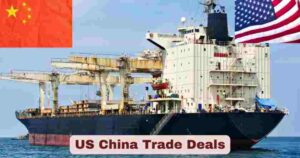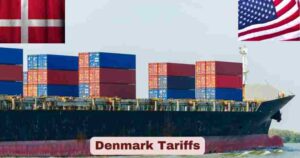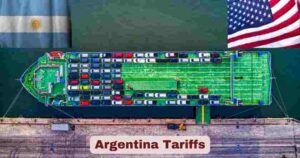Section 232 in US 2025
Section 232 tariffs represent a critical trade policy mechanism established under the Trade Expansion Act of 1962, specifically designed to protect national security through import restrictions on products deemed essential to American defense and economic security. In 2025, these Section 232 measures have been significantly strengthened, with tariff rates increased from 25% to 50% on steel and aluminum imports from most countries, demonstrating the administration’s commitment to rebuilding domestic industrial capacity and reducing foreign dependency in critical materials sectors.
The Section 232 authority grants the Secretary of Commerce power to investigate whether imports threaten to impair national security, with the President authorized to implement appropriate remedies including tariffs, quotas, or other trade restrictions. Throughout 2025, the Section 232 program has maintained its focus on steel and aluminum while expanding investigative scope to include processed critical minerals, reflecting evolving national security priorities and supply chain resilience considerations in an increasingly complex global trade environment.
Key Section 232 Tariff Stats & Facts in US 2025
| Section 232 Product | Current Tariff Rate | Effective Date | Coverage Scope | Exceptions |
|---|---|---|---|---|
| Section 232 Steel | 50% | June 4, 2025 | All Countries | UK (25% rate) |
| Section 232 Aluminum | 50% | June 4, 2025 | All Countries | UK (25% rate) |
| Section 232 Steel Derivatives | 50% | June 4, 2025 | Chapter 73 HTS | UK Exception |
| Section 232 Aluminum Derivatives | 50% | June 4, 2025 | Chapter 76 HTS | UK Exception |
| Section 232 Exclusions | Suspended | February 10, 2025 | All Applications | Existing Valid Until Expiration |
| Section 232 Country Exemptions | Revoked | February 10, 2025 | All Previous | None Active |
The Section 232 tariff enhancement to 50% represents the most substantial modification to the program since its original steel and aluminum implementation. This doubling of Section 232 rates from the previous 25% level demonstrates unprecedented commitment to domestic industrial protection under national security authorities, with the administration determining that existing Section 232 measures had not achieved sufficient progress in rebuilding sustainable domestic production capacity.
The comprehensive suspension of Section 232 exclusion requests effective February 10, 2025, eliminates the previously available mechanism for companies to seek product-specific relief from Section 232 tariffs. Combined with the revocation of all Section 232 country-level arrangements, this creates a uniform Section 232 tariff structure with the singular exception of the United Kingdom’s maintained 25% Section 232 rate, demonstrating the program’s evolution toward simplified, comprehensive protection for American steel and aluminum industries.
Section 232 Steel Tariffs in US 2025
| Section 232 Steel Category | HTS Classification | Section 232 Rate | Import Impact | Domestic Response |
|---|---|---|---|---|
| Section 232 Carbon Steel | 7208-7216 | 50% | Significant Reduction | Capacity Expansion |
| Section 232 Stainless Steel | 7218-7222 | 50% | Supply Restructuring | Production Investment |
| Section 232 Steel Pipes | 7304-7306 | 50% | Infrastructure Adaptation | Facility Modernization |
| Section 232 Steel Wire | 7217, 7312 | 50% | Manufacturing Adjustment | Market Consolidation |
Section 232 steel tariffs in 2025 provide comprehensive protection across all major steel product categories, with the uniform 50% Section 232 rate creating substantial cost advantages for domestic steel producers while significantly increasing import costs for foreign suppliers. The Section 232 steel program has successfully incentivized domestic production expansion, with multiple steel companies announcing capacity increases and facility upgrades in direct response to the enhanced Section 232 protection.
The Section 232 steel tariff structure has fundamentally altered supply chain dynamics across steel-consuming industries, with manufacturers adapting to higher material costs through strategic sourcing adjustments and increased domestic procurement. The enhanced Section 232 rates have created powerful incentives for American steel industry investment, supporting job creation and technological advancement while ensuring adequate domestic steel production capacity for national security requirements and economic resilience objectives.
Section 232 Aluminum Tariffs in US 2025
| Section 232 Aluminum Type | HTS Code Range | Section 232 Rate | Industry Effect | Production Response |
|---|---|---|---|---|
| Section 232 Primary Aluminum | 7601 | 50% | Smelter Revival | Capacity Restart |
| Section 232 Aluminum Alloys | 7602-7603 | 50% | Processing Growth | Technology Investment |
| Section 232 Aluminum Sheets | 7606-7607 | 50% | Packaging Impact | Production Increases |
| Section 232 Aluminum Extrusions | 7604-7605 | 50% | Construction Effects | Facility Expansion |
Section 232 aluminum tariffs have created transformative effects throughout the domestic aluminum industry, with the 50% Section 232 rate serving as a catalyst for smelter revival and processing capacity expansion across the United States. The comprehensive Section 232 aluminum coverage, spanning from primary aluminum ingots to specialized alloy products, ensures protection across the entire value chain while encouraging vertical integration among domestic aluminum producers under Section 232 protection.
The Section 232 aluminum program has driven significant investment in domestic aluminum processing capabilities, with companies pursuing long-term supply agreements with American producers to ensure stable material access under the enhanced Section 232 framework. The policy has effectively reduced import dependency while creating opportunities for American aluminum companies to expand market share and invest in advanced production technologies, fulfilling Section 232 objectives of strengthening domestic industrial capacity for national security purposes.
Section 232 Investigation Expansion in US 2025
| Section 232 Investigation | Launch Date | Investigation Status | Section 232 Scope | National Security Focus |
|---|---|---|---|---|
| Section 232 Critical Minerals | April 16, 2025 | Active Investigation | Processed Materials | Supply Chain Security |
| Section 232 Derivative Products | April 16, 2025 | Under Review | Manufacturing Inputs | Industrial Capacity |
| Section 232 Rare Earth Elements | April 16, 2025 | Data Collection | Strategic Materials | Defense Applications |
| Section 232 Battery Materials | April 16, 2025 | Assessment Phase | Energy Security | Economic Resilience |
The expansion of Section 232 investigations to processed critical minerals represents a significant evolution in the program’s scope, with the April 16, 2025 Section 232 directive launching comprehensive national security assessments of critical mineral supply chains. This new Section 232 investigation encompasses rare earth elements, battery materials, and strategic minerals essential for defense applications, renewable energy systems, and advanced manufacturing technologies, indicating potential future Section 232 tariff applications beyond traditional steel and aluminum sectors.
The Section 232 critical minerals investigation addresses supply chain vulnerabilities in strategic materials essential to American technological and defense capabilities. Industry experts anticipate that successful completion of this Section 232 assessment could lead to additional Section 232 tariffs on critical mineral imports, creating new opportunities for American mining and processing companies while potentially expanding the Section 232 program to cover broader categories of nationally strategic materials and products.
Section 232 UK Exception in US 2025
| Section 232 UK Arrangement | Steel Section 232 Rate | Aluminum Section 232 Rate | Exception Duration | Review Timeline |
|---|---|---|---|---|
| Current Section 232 Exception | 25% | 25% | Through July 9, 2025 | Secretary Review |
| Post-Review Section 232 Status | Variable | Variable | Pending Determination | Commerce Decision |
| Section 232 Quota Consideration | Under Review | Under Review | Future Implementation | Trade Assessment |
The United Kingdom’s Section 232 exception represents the only country-specific arrangement maintained following the comprehensive revocation of previous Section 232 exemptions and alternative arrangements. The 25% Section 232 rate for UK imports provides significant competitive advantage compared to the 50% Section 232 rate applied to all other countries, reflecting strategic importance of the US-UK relationship within the Section 232 framework.
The July 9, 2025 Section 232 review date creates uncertainty for UK exporters and American importers, as the Secretary of Commerce retains authority to modify Section 232 arrangements or implement quota systems. The UK Section 232 exception demonstrates how geopolitical considerations influence Section 232 implementation, creating opportunities for preferred trading partners while maintaining comprehensive Section 232 protection against broader international competition in steel and aluminum markets.
Disclaimer: The data research report we present here is based on information found from various sources. We are not liable for any financial loss, errors, or damages of any kind that may result from the use of the information herein. We acknowledge that though we try to report accurately, we cannot verify the absolute facts of everything that has been represented.

